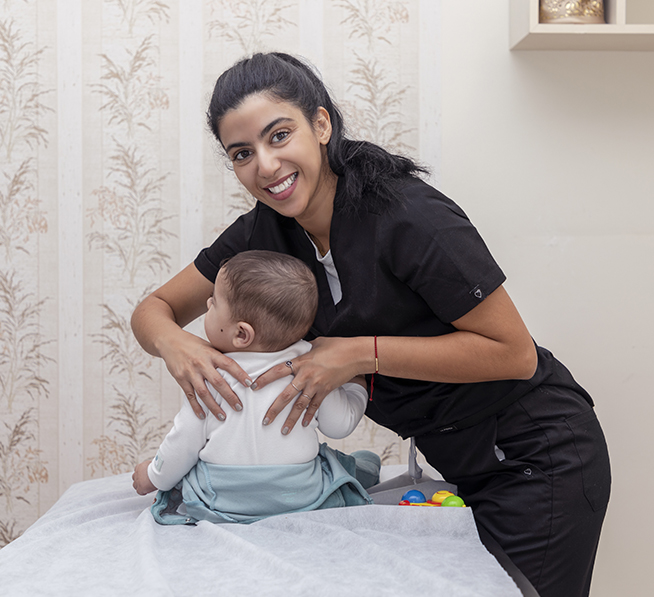Your baby’s health is our priority
In pediatric physiotherapy, specific treatment methods are used to manage and treat the different disorders encountered in infants, which may differ from those observed in adults.

What are the principles of respiratory physiotherapy for babies?
Respiratory physiotherapy is a recognized method covered by health insurance. It is prescribed by a doctor in the event of respiratory disorders in infants, particularly linked to pulmonary infections such as bronchiolitis, bronchitis or asthma.
This approach mainly has three objectives:
• Reduce the respiratory workload by clearing the airways to avoid exhaustion of the child.
• Initiate therapeutic education of parents and older children.
• Help monitor the child’s clinical progress.
These objectives converge towards a common goal: to restore optimal quality of life for the baby.
How does a respiratory physiotherapy session take place for babies?
Careful assessment of the clinical situation is essential and should always precede any intervention. However, during a typical session, we generally observe three steps performed in the order dictated by the clinical picture:
1- Unblocking the ENT sphere: To facilitate breathing, the physiotherapist may be required to treat the upper respiratory tract. This involves cleaning the child’s nose using physiological saline while keeping their mouth closed at the end of exhalation or inhalation, depending on the desired effect (blowing or sniffing).
2- Unblocking the bronchi: The physiotherapist performs thoracic maneuvers aimed at modifying respiratory flow rates in order to facilitate the expectoration of bronchial secretions or to improve pulmonary ventilation.
3- Cough stimulation: Not systematic, this step aims to encourage the expectoration of secretions by optimizing the energy cost/effectiveness ratio for the child.
The duration of a session varies depending on the child’s tolerance and respiratory state, but it generally lasts around thirty minutes.